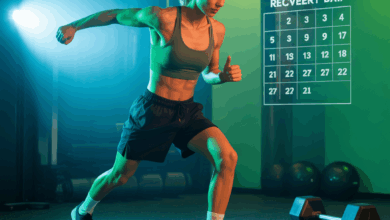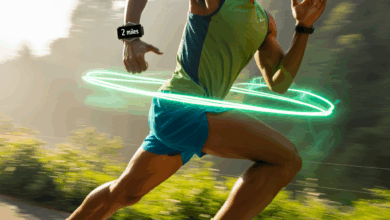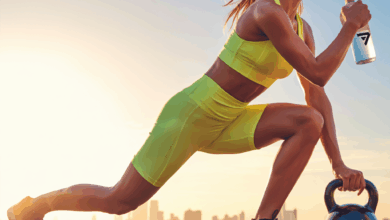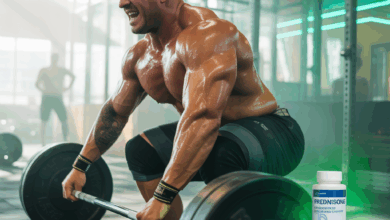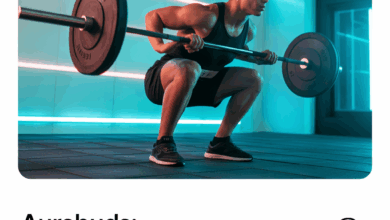Can You Workout With a Stye? Safe Exercise Tips & Modifications

Ever felt a painful bump on your eyelid the morning of leg day and wondered, “can you workout with a stye?” You’re not alone — whether it’s a weekend run, a group class, or a gym session you don’t want to miss, a stye throws a wrench in training plans. The good news: in many cases you can still exercise safely with simple precautions and smart modifications. This guide explains when to push through, when to rest, and exactly how to protect your eye, fellow gym-goers, and your fitness progress.
What is a stye and why it matters for exercise
A stye (hordeolum) is a red, painful bump on the eyelid caused by a local bacterial infection of an oil gland. Symptoms include tenderness, swelling, watering, and sometimes crusting. Because styes are related to bacteria and inflammation, sweat, touching your face, and shared equipment can make them worse or increase the risk of spreading germs. Understanding this helps you decide how to exercise safely and responsibly.
Can you workout with a stye?
Short answer: often yes, but with important caveats. Low-to-moderate intensity exercise that doesn’t irritate the eye is usually okay. However, if the stye is painful, significantly swollen, causing blurry vision, or you have a fever, skip workouts and see a healthcare provider. The goal is to avoid actions that increase irritation, spread bacteria, or delay healing.
When it’s okay to exercise
- Mild stye with minimal swelling and no fever.
- You can keep your hands off your eye and avoid contact lenses.
- You can follow hygiene steps (wash hands, clean equipment) before and after.
When you should rest
- Severe pain, increasing size, or spread of redness beyond the eyelid.
- Any vision changes, fever, or if your doctor advises rest.
- You’re unable to avoid touching your eye (for instance during heavy contact sports).
Best workouts to do with a stye
Choose workouts that keep sweat and hand-to-eye contact to a minimum, and allow you to maintain distance from others.
Low-impact cardio
- Brisk walking or light jogging outdoors where you can maintain airflow and social distance.
- Stationary cycling at home or in a spot where you can avoid touching gym equipment used by others.
- Elliptical with a towel barrier you replace or launder frequently.
Strength training modifications
- Focus on home bodyweight exercises or dumbbells you sanitize (push-ups, squats, rows).
- Avoid heavy overhead lifts if you find yourself rubbing your eyes during sets — choose lower-risk movements like split squats or floor presses.
- Use resistance bands instead of shared machines at the gym to reduce contact points.
Yoga, Pilates, and mobility
- Gentle yoga and mobility work are excellent for keeping fitness without increasing eye irritation.
- Avoid inversions or positions that increase eye pressure if your eye feels sensitive.
Workouts to avoid while you have a stye
Certain activities are higher risk for irritation or spreading bacteria:
- Contact sports (basketball, wrestling) where accidental hits to the face are likely.
- Hot, sweaty group classes where you’ll be near others and touching shared equipment often.
- Swimming in pools or hot tubs — chlorine or bacteria can irritate the stye and contacts increase risk.
Pre- and post-workout hygiene: practical tips
Hygiene is the cornerstone of safely exercising with an eye infection. Use these practical steps before, during, and after your session:
- Wash hands thoroughly for 20 seconds before touching your face or contact lenses.
- Skip contacts — wear glasses until the stye resolves.
- Bring a clean towel and use it to blot sweat instead of rubbing your face; replace or wash it after each use.
- Sanitize any equipment you touch with an alcohol-based wipe before and after use.
- Avoid makeup and eye creams until fully healed.
- If using warm compresses as advised by your provider, do them at home and discard cloths afterward.
Real-world examples and sample workout variations
Example 1: Outdoor runner with a mild stye — choose a 30-minute easy run on quiet trails, wear sunglasses to block sweat, and skip crowded park paths. Wash hands and rinse face with cool water afterward.
Example 2: Gym-goer who prefers strength training — switch a heavy barbell session to a home circuit: goblet squats, single-arm dumbbell rows, Bulgarian split squats, and planks. Use a fresh towel and hand-sanitize between sets.
Example 3: Group class lover — substitute a class with an online yoga session at home. Avoid hot yoga if your eye’s inflamed.
Healthy lifestyle tips to speed recovery
- Rest and sleep: adequate sleep helps immune function and speeds healing.
- Nutrition: focus on anti-inflammatory foods — colorful fruits and vegetables, omega-3 rich fish or flax, and lean protein to support tissue repair.
- Hydration: staying hydrated thins secretions and supports recovery.
- Stress management: lower stress with breathing exercises; chronic stress can slow healing.
- See a provider: if symptoms persist beyond a week, worsen, or you experience vision changes, consult your doctor for possible antibiotics or drainage.
Frequently Asked Questions
Sweating itself doesn’t cause a stye to worsen, but sweat can carry bacteria and cause you to rub your eye. Use a clean towel to dab sweat away and avoid touching the stye; that reduces irritation and the chance of spreading infection.
No — avoid contact lenses until the stye heals. Contacts can trap bacteria and irritants against the eye, slowing recovery. Switch to glasses and dispose of or thoroughly disinfect lenses and cases after recovery.
Most styes improve within 3–7 days with home care like warm compresses. If symptoms are mild and you’re following hygiene precautions, you can resume light workouts within a few days. If pain, swelling, or vision issues persist, wait until cleared by a healthcare provider.
Conclusion — Can you workout with a stye?
Yes, you can often workout with a stye, provided you choose low-risk activities, practice strict hygiene, avoid contact lenses, and steer clear of workouts that increase the chance of rubbing or spreading bacteria. Tune into your body: when in doubt, rest and seek medical advice. Protecting your eye and others is the priority — you can return stronger once the stye resolves.
Ready to adapt your routine? Check out tailored workout routines for at-home training, browse our nutrition guides to support recovery, and visit our wellness tips for more ideas on protecting your health while staying active.
Call to action: If you’re dealing with a stye right now, try today’s low-impact workout and follow the hygiene steps above — share your experience in the comments or sign up for our recovery-focused training plan to stay on track safely.

